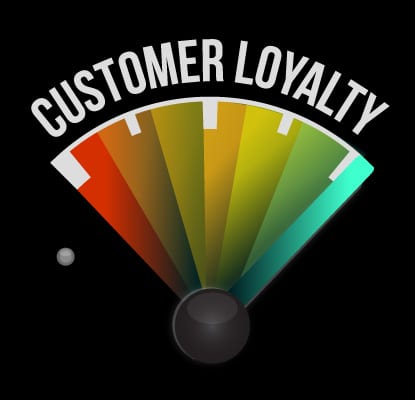Ever try to contact a company to get some help with a product? Or called your doctor’s office when you were sick only to get an automated phone menu? How were you treated the last time you had a problem? How did you feel afterwards?
Customer service can create winners and losers in business. How does your company handle phone calls and emails and particularly, ones from angry customers? What’s your plan if you get a bad review online or on social media? Translation: do you know how to handle complaints?
Here’s how to win over angry customers, turn a bad situation around and build customer loyalty in the process.
7 Steps To Handling Customer Complaints
An unhappy customer will talk more about what a company does wrong than what they do right.
And these days, they have very public ways of doing it. Negative online reviews, rants on Facebook and Twitter pages and personal blogs can damage your reputation.
When a complaint happens (and it will, eventually) how you respond is critically important. Prepare a path to resolution. You want your customer walking away feeling their problem was heard, addressed and fixed promptly. Imagine them posting about how well you took care of them!
1. Acknowledge the complaint.
Get them at hello. Saying something like “Good morning, I’m Dorothy, how can I help you today?” is a great, friendly start.
If they are calling with a complaint, the first thing to do is acknowledge the problem. Let them know you heard them by repeating back what you heard them say in your own words. Never argue or make them wrong!
If they are clearly frustrated, say something as simple as, “I know this must be frustrating for you. Give me a quick minute to look into this further, so I can make sure we get this fixed.” This immediately lowers the boiling point.
2. Be positive.
Always use a positive tone of voice, whether typing or over the phone.
For example, never say something like this:
“We’re not going to be able to do that for you. We won’t have those in for another month.”
Instead, tweak your words with a more positive approach:
“I’d love to make that happen for you! We have those coming out next month, and I can make sure you are first in line. Do you want me to get in touch with you when they’re in?”
See how delivering the same message can have a dramatically different tone? In the second, they will feel taken care of even though they may be disappointed.
3. Get the details
Get to the cause of the problem quickly. Ask for details. Remember that your customer will probably not have your knowledge of the product, so drilling down to the details can give you more insight into what they are experiencing and shows you are interested.
As the provider, don’t you want to know how to improve your product? This is great market research—for free!
4. Become the problem solver
When a customer contacts a company with a complaint, they are usually annoyed and just want it to be fixed. Be ready with a solution. Do you accept returns? Replacements? A free second appointment? What is your policy?
Now, there are times when you may not be able to fix things. If you don’t have the answer they are looking for, let them know you will find it for them. People will respect you and have more patience if they feel you are being honest and working toward a solution.
 5. Try a little tenderness
5. Try a little tenderness
Ask them about their day, call them by name, and be friendly as you work through the complaint. Work through their issues patiently.
Letting them know you actually care about resolving their problem shows you care about them. This has a disarming effect that will calm people down and turn their anger into gratitude.
6. Handle the close
Before you end the dialogue check that their problem has been resolved. Don’t just assume that everything is fine, even after you have handled the initial complaint. Ask them if there is anything else they need help with. This will give them the chance to speak up or let you know the problem is solved.
7. Follow up
“Please rate our support” emails are usually what come after requesting customer support. They have become a necessity for large companies, but at the same time, they are incredibly impersonal.
If it is feasible for you to follow up with a phone call, do it. You’ll stand out from the crowd, and you’ll create a lasting positive impression.
Imagine your doctor’s office follows up the next day to see how you are? Or the people who delivered that fridge called or emailed you to see if it was working for you? We always stay in touch with our clients after launch to see if they have any questions, find out if something is not working or get to hear about their success.
These types of interactions win over angry customers and build loyalty.
People love companies that love their customers.




 5. Try a little tenderness
5. Try a little tenderness



